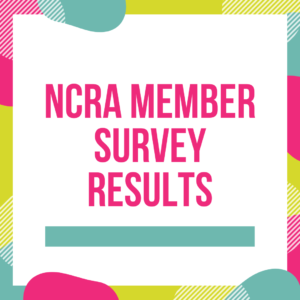By Brenda Rogers-Fiscus, Deborah Smolinske, and Beverly Thomas
Proofreading is the last step in the finalization of your transcript. The proofreader’s eyes are the last ones to review the final product. It’s important to set the stage and do the most thorough job possible in order to produce the best transcript. We offer the following tips to make the task more efficient, more thorough, and more foolproof.
- Scoping and proofreading are not the same function. For the best results, scoping should be done by someone else and at a different time than when you proofread.
- Create a comfortable environment with good lighting and seating. Minimize distractions and interruptions. Try to ensure you are fed and well rested prior to starting your proofing session.
- Determine which method works best for you: in the software on your computer; using an app on a tablet device; printed on paper.
- Make sure to allot a sufficient amount of time to do the job thoroughly. Slow and steady wins the race every time over fast and sloppy.
- Take breaks – don’t try to read 400 pages all at one go.
- All research should be completed prior to commencing proofreading. You will lose the flow necessary for contextual reading if you’re stopping every half page to double-check a spelling or perform an online search for a term.
- Choose a reputable primary dictionary to follow (Merriam-Webster, American Heritage, Oxford) when making decisions on spellings, hyphenation, and one word/two words rather than stand-alone books that may be outdated or unsupported by references.
- If you encounter a word/term with which you are unfamiliar, be wary of accepting the first word that pops up in a Google search that seems to fit your phonetic. Be sure to check the definition in a reputable dictionary, and make sure it fits the context.
- While spot-checking the audio can be helpful, listening to continuous audio is not recommended. It is difficult to read for context, pay attention to punctuation, and listen to audio at the same time.
- Be aware of your weaknesses. If you habitually misstroke things like “they’re/there/their” or “it’s/its,” pay special attention to occurrences of those words. Also watch for incorrect small words like “as/at,” “it/is,” and missing words like “a” and “the.”
- Keep in mind the common words that are often transposed (I did/did I) and words that are only one letter different (formal/former, contact/contract), and pay special attention when they occur.
- If you’ve used more than one scopist to get the job done, pay special attention to consistency in capitalization, hyphenation, and other potential differing styles among scopists.
- Don’t forget to run a final spell-check in your software after you’ve finished proofreading. Spell-check is very good at catching double words such as “the the” and “that that,” which are easily missed while reading. Consider running the finished document through Word’s spell-check and grammar checker. While Word does have some unusual ideas about grammar (and should never be taken as gospel), it is very helpful in identifying missing prepositions, “form” for “from” and the like, as well as other small things that can otherwise be missed during proofreading.
- After you’ve finished your initial proofreading, go back and double-check bylines and speaker identifications as well as consistency with any special terms you’ve become aware of during the job. It’s easy to read right past such errors when you’re focused on reading for context.
The final proofreading of a transcript is your last chance to ensure you are producing your most complete and accurate product. Don’t shortchange yourself or your clients by glossing over the small details or thinking just a quick pass will be sufficient. As you continue to produce beautiful, error-free transcripts, your reputation among your clients and your peers will flourish. The effort is well worth the reward!
Brenda Rogers-Fiscus, Deborah Smolinske, and Beverly Thomas are the primary team members of Perfect Partners Transcript Brigade, which was established in 2014. Learn more at transcriptbrigade.wordpress.com.









